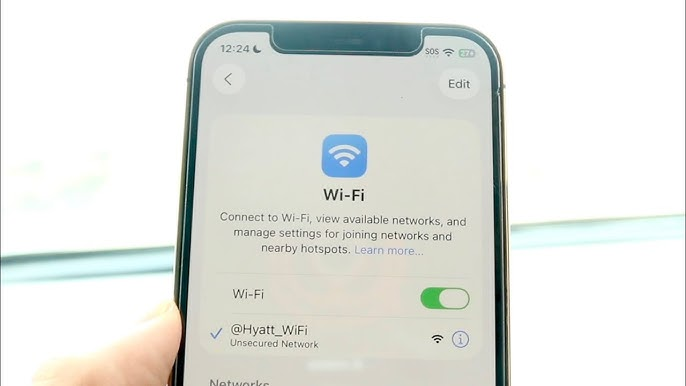低调发育的「Idle StoneAge」,会成为GameFi玩家的惊喜吗?
“Idle StoneAge在保证玩家能够0成本边玩边赚的同时,尽可能地采用多种游戏和经济机制来延长游戏的生命周期,使得P2E的时间更长,经济更具弹性。”
游戏作为一种传统商品,每年的淘汰率高达 90%,甚至有 70%在进入市场前就胎死腹中,而对于 Gamefi 项目来说,淘汰率可能会更高。随着行业的发展和成熟,Gamefi 领域的优胜劣汰在大家挑剔的眼光下会更加激烈,在这种竞争中,以往的一些 gamefi 项目可能会被逐渐淘汰;而另一些则进步,保留,存活下来,比如 Axie infinity;还会有一些后起之秀,成为行业新的期待,比如低调发育的 Idle StoneAge,或将由其完善和独特的游戏和经济机制给 GameFi 玩家带来惊喜。
Idle StoneAge 是什么?

Idle StoneAge 是一款多链部署,首发在 KuCoin 公链 KCC 上的合成 NFT 概念双端游戏(网页端/移动端)。玩家可在游戏中挂机获得收益,通过 NFT 的合成、升级、觉醒等提升 NFT 角色能力,并且在战斗中逐步获得更高收益。游戏还设置了多种针对玩家的激励机制,包括高额的流动性挖矿奖励,英雄排行榜空投,盲盒赠礼,邀请激励等等,且针对 NFT 交易配套了专门的低手续费交易市场。Idle StoneAge 的团队由来自西班牙、法国、新加坡的资深研发工程师和社区运营人员组成,拥有一定的海外游戏开发运营基础与区块链defi和gamefi的开发经验。整个游戏项目由社区组成的 DAO 驱动,用户、玩家和核心团队一起运作和发展整个游戏和生态网络。
驱动游戏的 NFT 资产
在 Idle StoneAge 中,NFT 资产是游戏收益的主要生产力,也是驱动整个游戏模式的核心。
玩家可以通过花费一些代币在游戏官网抽取 NFT 英雄盲盒,一次性抽取 10 个则会获得优惠。

Idle StoneAge 提供了多种盲盒,在前期的创世盲盒销售中,十连抽还会赠送项目代币。在限定盲盒中则会抽出高品质的新英雄。除此之外,用户还能在 NFT 交易市场中挑选和交易心仪的 NFT 英雄。每个 NFT 英雄都具有其对应的名称、品质、属性和技能,用于定义其稀缺度、游戏表现水平以及相应的收益能力。英雄的品质分为劣质、普通、稀有、史诗、传说和神话,史诗品质以上的 NFT 存在数量上限,当史诗品质以上的 NFT 的存量上升时,通过盲盒抽取到这些 NFT 的概率会不断下降,单张史诗以上的 NFT 获取的成本和价格则会成倍上升。

NFT 英雄在游戏中的表现水平还由生命值、攻击力等游戏内基础属性决定,玩家可以通过花费游戏内中心化代币 Stone 来提升英雄等级,从而提升其游戏内基础属性和表现。为了使得玩家在出售 NFT 时能够回收 Stone,玩家还可以逆操作,把已升级的英雄重置,使其等级重新变为 1 级,系统则会返还 90% 的英雄升级费用。

获得 NFT 英雄后,玩家可以参与英雄竞赛、大逃杀、英雄榜、BOSS 地牢等多个游戏玩法,也能够通过英雄融合和觉醒提升英雄属性和稀有度,还可以参与 NFT 质押挖矿。值得注意的是,Idle StoneAge 仍为玩家准备了免费游玩的机会,在游戏中为玩家赠送了免费的非 NFT 英雄,用于参与主线闯关和竞技场等基本游戏模式,在这些模式中玩家仍能通过游玩获得一定收益。

官方承诺,NFT 盲盒销售获得的全部资金将以几种形式回馈给玩家:
1.回购项目代币和奖励质押用户
2.作为流动性份额
3.作为游戏模式的奖励放入奖金池
游戏玩法和 P2E 模式
Idle StoneAge 基于 NFT 资产提出了一系列游戏玩法和相应的 P2E 模式,官方将游戏性较强的冒险模式放入了游戏主体中,而将偏向打金的进阶玩法放到了官网上。由于游戏主体采用中心化服务器架构来保障玩家体验和降低手续费,在参与冒险模式时玩家需要将英雄 NFT 或相应代币资产质押/充值到游戏中进行使用,而玩家也可以随时提现 NFT 资产和充值的代币份额到自身钱包。

在冒险模式中,核心玩法是卡牌回合制。每个英雄都有由其自身属性和等级决定的战力值,玩家队伍的整体战力将会成为战斗胜负的重要标准。在 PVE 中(玩家 VS 环境),玩家将挑选最多 3 个英雄上场挑战对手,在每一回合,双方未阵亡的英雄将轮流攻击对方或释放技能。随着闯关的进度增加,关卡对手的战力也会逐渐提升,单次通过的奖励和挂机的效率也会相应的增加。

当玩家拥有 3 个达到 30 级的英雄后,PVP(玩家 VS 玩家)模式则会解锁,玩家可以在竞技场中与其他玩家一较高下,在每天 12 点(GMT+0)时,系统将根据所有人的排名积分进行排名结算奖励,这里的奖励不但包括代币奖励,还包括奖励代币的提现额度,排名较高的玩家能够有更多额度将游戏中赚到的代币提现到自己的钱包。

在官网的进阶模式中,玩家的资产是完全去中心化的。玩家可以参与英雄竞赛、巅峰对决、大逃杀、英雄排行榜等多个玩法。
在英雄竞赛中,玩家可以质押多张 NFT 卡牌参与比赛,根据 NFT 的比赛分数进行排名。NFT 的品质和各项属性越高,就越容易获得更多奖池中的奖励。玩家也可以质押更多 SHELL 代币来获得更多的奖励份额,但排名较低时也可能会损失质押的代币。

玩家不仅自己可以参与比赛,Idle StoneAge 也提供了电竞竞猜类似的游戏模式——巅峰对决。在巅峰对决中,系统会抽取两支排名较高且分数接近的队伍进行对决,并且在游戏内放出系统模拟的对决录像,玩家可以在网站上对队伍胜负或者比分进行竞猜。

而大逃杀则是兼具高风险和高收益的游戏模式,玩家质押 NFT 参与战斗后,在 100 位 NFT 英雄中,只会有一名获胜者,获胜者会获得极其丰厚的 SAX 奖金,不过危险的是排名低于 50% 的英雄会被永久摧毁。从另一个角度看,市面上大多数 GameFi 项目的 NFT 不具备完善的销毁机制,导致 NFT 对应的产出无限膨胀,给市场带来巨大的抛压。Idle StoneAge 通过“大逃杀”玩法和融合玩法吸引玩家主动销毁 NFT,控制高品质 NFT 卡牌的总量,从而大幅度延长了游戏生命周期。

大逃杀不一定适合所有的玩家,对于追求平稳发展的玩家来说,强化手中的 NFT 英雄,竞争英雄排行榜的奖励可能是个不错的选择。排行榜将根据 NFT 英雄的评分展示英雄排行,分为总榜和各英雄分榜,并且分榜会根据新推出的 NFT 英雄的进度不断更新。在各个排行榜上的玩家每隔一段时间就会收到空投 SHELL 奖励。
其他获得收益的方法
在项目官网,玩家还可通过出售和拍卖 NFT,邀请新玩家,质押同质化代币,质押 NFT 等多种方式获得收益。

经济模型
GameFi 框架
基于以下 GameFi 框架,Idle StoneAge 构建了完善的 GameFi 闭环:
· POT(基于时间 Time 投入产出的闭环):玩家能够通过闯关、竞技场、挂机等花费一定时间的操作获得收益。后续玩家还可以通过公会等形式,出售自己的时间为富人打工,让游戏“肝”得物有所值;
· POM(基于资金 Money 投入产出的闭环):玩家通过购买代币,强化 NFT,可获得 NFT 的加成,加成可提升打金效率,形成 GameFi 闭环。后续玩家也能通过公会等形式雇佣他人或以租赁 NFT,收益分成的方式实现收益最大化;
· POL(基于随机性 Luck 投入产出的闭环):Idle StoneAge 引入了盲盒设计,并且抽取盲盒可以额外获得随机奖励。同时还引入战斗竞猜的随机性,能与游戏玩法结合提升游戏耐玩性。
代币模型
在石器家族中,经济体系主要由两种同质化代币 SAX、SHELL 和石器家族游戏内的游戏币 Stone 组成。

其中,SAX(Stone AX) 是用于游戏治理的治理代币,它的供给是固定的,其最大供应量为 100,000,000 枚,不会增长,且会被消耗与销毁,因此它是一种绝对通缩代币。它可以被用来激励玩家参与社区建设,如押注和投票,以及参与更困难的游戏玩法,如 PVP。此外,SAX 还赋予玩家社区治理权力及长期价值。

SHELL 则是用作交换媒介的游戏支付代币,这是一种趋势衰减的通货膨胀代币。它的初始供应量为 10,000,000,000,没有最大供应量,但它的供应量和价格将保持在一定范围。也就是说,SHELL 会随着游戏用户的增长和活跃度的变化增发和销毁,这是因为 SHELL 旨在匹配游戏内部经济的增长,并为游戏内部经济互动和进入游戏的新玩家提供坚实的货币基础,其减少了二级市场对游戏经济的影响,配合 Stone 增加了游戏中经济系统的稳定性。
Stone 是游戏内部的中心化货币,是玩家 PVE 的主要奖励来源,可以在游戏中以 2,000:1(Stone: SHELL)的比例和 SHELL 相互兑换,它在经济循环中扮演着重要角色。

这里主要为大家介绍 SAX的应用,SAX 可以被用于购买英雄 NFT 盲盒,或者在市场中购买英雄。英雄融合时也需要一定量的 SAX。除此之外,SAX 还可以作为额外的押注参与到官网的进阶玩法中,或者作为指定代币购买某些活动的入场券。SAX 还可以被用于质押,从而获取挖矿奖励或者参与社区投票。值得注意的是,NFT 交易手续费的 20%还将被用于回购 SAX 或者奖励质押用户。
治理代币分配
下图为 SAX 的代币分配比例和机制:

种子轮 8%:TGE 10%,其余部分在 18 个月内逐渐解锁;
私募 10%:TGE 10%,其余部分在 18 个月内逐渐解锁;
IDO 1%:TGE 100%;
团队和顾问 10%:TGE 10%,其余部分在 36 个月内逐渐解锁;
流动资金池 5%:TGE 100%;
流动性激励 20%:TGE 0%,分四年解锁,第一年解锁 40%,第二年解锁 30%,第三年解锁 20%,第四年解锁 10%;
游戏激励 35%:TGE 3%,其余部分在 48 个月内逐渐解锁;
生态发展基金 11%:TGE 10%,其余部分在 12 个月内逐渐解锁。
项目进展及数据
项目进展
据官方透露,目前 Idle StoneAge 已完成了 V4 版本的开发,并且已经开始公测 V3 版本,开发迭代速度较快,且对项目上线的时间较为严谨。目前 V3 测试版本包括英雄排行榜、英雄竞赛等多个玩法,还囊括了交易所、英雄图鉴等一系列相关应用,已经完成的玩法开发超越目前大多数链游,正在开发和计划开发的玩法已经规划了到 2022 年 4 季度。官方表示,在项目上线初期可以保证稳定地在每 2 周上线一个新功能或新玩法,后续还将加入虚拟土地、装备NFT等多个热门元素。

游戏数据
据官方数据,目前有近 2K 用户参与 V1,V2,V3 版本的测试,45K 张 NFT 卡牌被抽出,官方的测试代币几度被消耗一空,测试活动较为火热。

社区数据
Idle StoneAge 官方账号有 32,200 关注用户,置顶推文留言、转发、点赞数据为 9581、30K、21.9K,作为还未正式上线的项目来说,整体热度还不错。


在 Telegram 和 discord 社区,Idle StoneAge 则分别拥有 46k 和 21.5K 用户。
总结
Gamefi 项目要想获得长久成功,它的先决条件离不开天时,地利,人和。
天时,也就是说宏观环境上,整个 gamefi 领域,它必须保持在一个整体增长的趋势,或者说,机构对于 Gamefi 领域的投资和孵化比较热情。
地利,也就是说 Gamefi 项目要部署到哪条区块链上,或者它依托于哪些生态和平台进行发展。其实每条区块链就像一个去中心化国家,由于用户对于自身在链上的资产有黏着度,所以也会对相应区块链上的应用产生一些依赖,这个时候就要根据用户和竞争对手、公链潜力等等因素选择合适的公链进行部署,或者多链部署,这也是项目成功关键。
人和,也就是说 Gamefi 协议的创始团队得团结一致,并且具足经验,和用户共同去营造一个良好的社区氛围,同时团队对于项目的目标应该是长久的成功,而不是短暂的疯狂。
Idle StoneAge 或许兼具了这三者。作为一款受多家机构投资的 GameFi 项目,在天时上已经具有一定优势;首发 KCC,同时多链部署,在地利上也不输竞争对手;同时,项目团队在游戏机制和经济设计上也让利玩家,愿意在 APY 和游戏生命周期两个层面尽可能实现共赢,在目标方面不急于上线而是仔细打磨产品,社区数据也表明其在运营方面有所作为。Idle StoneAge 也许将会成为 GameFi 玩家的惊喜。
如对 Idle StoneAge 的最新进展感兴趣,可以关注其官推。



